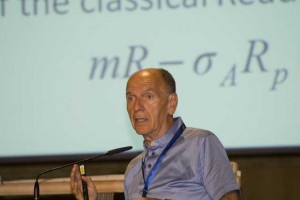 The European Crystallographic Association is to award the third European Crystallography Prize to Prof. Carmelo Giacovazzo of the University of Bari, Italy. Prof. Giacovazzo is being recognized for his major theoretical and practical contributions to the solution of the phase problem in a wide spectrum of applications.
The European Crystallographic Association is to award the third European Crystallography Prize to Prof. Carmelo Giacovazzo of the University of Bari, Italy. Prof. Giacovazzo is being recognized for his major theoretical and practical contributions to the solution of the phase problem in a wide spectrum of applications.
The European Crystallography Prize, which includes a monetary award as well as a certificate of recognition, will be presented during the Opening Ceremony of the upcoming 21st European Crystallographic Meeting to be held in Durban, South Africa, August 24-29, at which Prof. Giacovazzo will describe the work for which he is being honoured.
Members of the European Crystallography Prize Committee, who were appointed by the Executive Committee of the European Crystallographic Association are: Professor Davide Viterbo (Coordinator), University of Piemonte Orientale, Italy; Professor Leonid Aslanov, University of Moscow, Russia; Professor Boris Kamenar, University of Zagreb, Croatia; Professor Åke Kvick, European Synchrotron Radiation Facility, Grenoble, France; Professor Dino Moras, University of Strasbourg, France; Professor Jochen Schneider, HASYLAB at DESY, Hamburg, Germany; Professor Xavier Solans, University of Barcelona, Spain.
Prof. Giacovazzo was born in Locorotondo (Bari), Italy and studied Physics in Bari. He is Full Professor of Mineralogy at the University of Bari and Director of the CNR Institute of Crystallography. After a first period dedicated to the study of defects in minerals, he has devoted his research interests do the development of Direct Methods for the solution of the phase problem. His main theoretical contributions are the Representation Theory and several probabilistic formulae for the estimate of structure invariants and seminvariants. From the practical point of view he has directed and coordinated a research group for the implementation of widely used computer programs for the solution of crystal structures not only from single crystal data but also from powder diffraction data. More recently he has developed new and powerful methods for solving ab-initio macromolecular structures using data collected at atomic resolution. He has also provided a new probabilistic approach for the location of the heavy or anomalous scatterers in SIR-MIR-SAD-MAD techniques and for the subsequent phase estimation.
